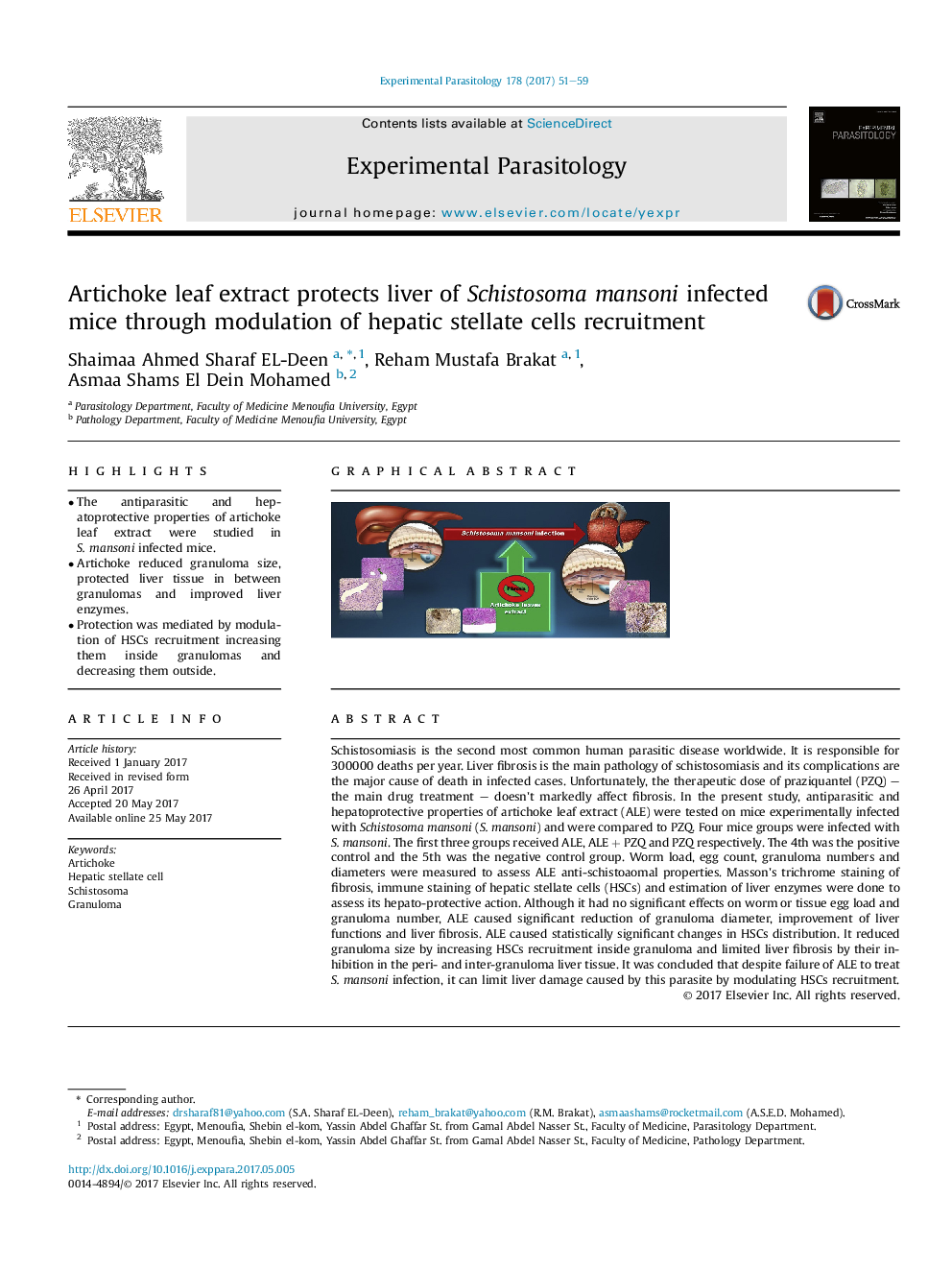| Article ID | Journal | Published Year | Pages | File Type |
|---|---|---|---|---|
| 5741067 | Experimental Parasitology | 2017 | 9 Pages |
â¢The antiparasitic and hepatoprotective properties of artichoke leaf extract were studied in S. mansoni infected mice.â¢Artichoke reduced granuloma size, protected liver tissue in between granulomas and improved liver enzymes.â¢Protection was mediated by modulation of HSCs recruitment increasing them inside granulomas and decreasing them outside.
Schistosomiasis is the second most common human parasitic disease worldwide. It is responsible for 300000 deaths per year. Liver fibrosis is the main pathology of schistosomiasis and its complications are the major cause of death in infected cases. Unfortunately, the therapeutic dose of praziquantel (PZQ) - the main drug treatment - doesn't markedly affect fibrosis. In the present study, antiparasitic and hepatoprotective properties of artichoke leaf extract (ALE) were tested on mice experimentally infected with Schistosoma mansoni (S. mansoni) and were compared to PZQ. Four mice groups were infected with S. mansoni. The first three groups received ALE, ALE + PZQ and PZQ respectively. The 4th was the positive control and the 5th was the negative control group. Worm load, egg count, granuloma numbers and diameters were measured to assess ALE anti-schistoaomal properties. Masson's trichrome staining of fibrosis, immune staining of hepatic stellate cells (HSCs) and estimation of liver enzymes were done to assess its hepato-protective action. Although it had no significant effects on worm or tissue egg load and granuloma number, ALE caused significant reduction of granuloma diameter, improvement of liver functions and liver fibrosis. ALE caused statistically significant changes in HSCs distribution. It reduced granuloma size by increasing HSCs recruitment inside granuloma and limited liver fibrosis by their inhibition in the peri- and inter-granuloma liver tissue. It was concluded that despite failure of ALE to treat S. mansoni infection, it can limit liver damage caused by this parasite by modulating HSCs recruitment.
Graphical abstractDownload high-res image (442KB)Download full-size image
